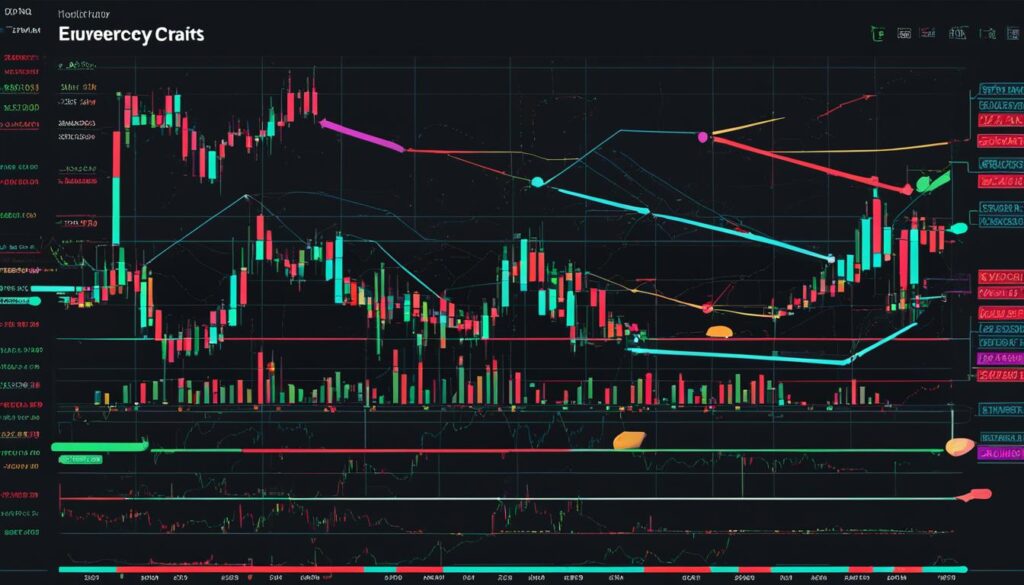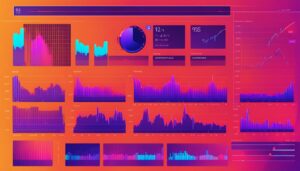Greetings! If you’re interested in the exciting world of forex trading and want to master the art of buying and selling currency pairs, you’ve come to the right place. In this article, I will guide you through the intricacies of the forex market and provide valuable insights into successful trading strategies, forex trading signals, and currency exchange.
Forex trading involves the buying and selling of currency pairs to take advantage of fluctuations in exchange rates. To excel in this dynamic market, it’s crucial to understand the different currency pairs available, the factors influencing their movements, and the techniques employed by successful traders.
Throughout this article, we will explore various aspects of buying and selling currency pairs, including the significance of understanding currency pairs, the process of executing trades, factors to consider when timing trades, selecting profitable currency pairs, and the importance of fundamental and technical analysis.
Key Takeaways:
- Understanding currency pairs is essential in forex trading. Major currency pairs, exotic currency pairs, and commodity pairs present different trading opportunities.
- Buying and selling in the forex market allow traders to profit from currency value appreciation or depreciation.
- Timing trades, considering forex market liquidity and leverage, greatly impact the success of buying and selling currency pairs.
- Selecting profitable currency pairs involves assessing risk appetite, currency pair correlations, and monitoring economic and geopolitical events.
- Deciding when to buy and sell currency pairs requires a combination of fundamental analysis, technical analysis, and awareness of market trends.
Now that we’ve set the stage, let’s dive deeper into the exciting world of buying and selling currency pairs in the forex market. By the end of this article, you’ll have the knowledge and tools necessary to navigate the market with confidence and potentially achieve profitability in your trading endeavors. So, let’s get started!
Understanding Currency Pairs in Forex Trading
When participating in forex trading, it is essential to have a clear understanding of currency pairs. In this section, I will explain what currency pairs are, their classifications, and their significance in the forex market.
In forex trading, currencies are always traded in pairs, representing the exchange rate between two different currencies. Each currency in the pair is represented by a three-letter code, such as USD for the U.S. dollar or EUR for the euro.
Major Currency Pairs:
The most commonly traded currency pairs are known as major currency pairs. These pairs involve the world’s strongest economies and highly liquid currencies. Major currency pairs include the U.S. dollar (USD), euro (EUR), British pound (GBP), Japanese yen (JPY), and Swiss franc (CHF).
Examples of major currency pairs are:
- EUR/USD (Euro/US Dollar)
- USD/JPY (US Dollar/Japanese Yen)
- GBP/USD (British Pound/US Dollar)
Exotic Currency Pairs:
Exotic currency pairs involve the trading of major currencies with currencies from emerging or less common economies. These pairs may exhibit higher volatility and lower liquidity compared to major currency pairs.
Commodity Pairs:
Commodity pairs are currency pairs that include currencies from countries heavily dependent on commodities. The exchange rates of these pairs are often influenced by changes in commodity prices.
Now that we have a basic understanding of currency pairs, let’s explore their importance in forex trading and how they impact trading strategies and profitability.
The Significance of Currency Pairs in Forex Trading
As a forex trader, understanding currency pairs is crucial for several reasons:
- Market Accessibility: Currency pairs provide the opportunity to trade various combinations of currencies, making the forex market highly accessible for traders worldwide.
- Liquidity: Major currency pairs, being the most actively traded pairs, offer high liquidity. This ensures that traders can easily enter and exit positions without significant price slippage.
- Diversification: Currency pairs allow for diversification in trading strategies by allowing traders to focus on different currency relationships and take advantage of varying market conditions.
- Volatility: Different currency pairs exhibit different levels of volatility, providing traders with opportunities to profit from price fluctuations.
- Correlations: Understanding the correlations between currency pairs can help traders spot potential trends and make informed trading decisions.
“Currency pairs provide the foundation for forex trading, enabling traders to speculate on the exchange rates of different currencies and potentially profit from market movements.”
By comprehending the various types of currency pairs and their significance, traders can better navigate the forex market and develop effective trading strategies based on their goals and risk preferences.
Buying and Selling in the Forex Market
In the forex market, I have the opportunity to take sides and participate in buying and selling currencies. I can bet on a currency’s value appreciating or depreciating against another currency, allowing me to profit from correctly predicting the direction of currency movements.
For instance, if I believe that the U.S. dollar will increase in value compared to the euro, I can take the buying side and purchase the EUR/USD currency pair. On the other hand, if I anticipate that the euro will strengthen against the dollar, I can take the selling side and sell the EUR/USD pair.
By taking sides in forex trading, I engage in a dynamic market where I can actively speculate on currency value appreciation or depreciation. This flexibility empowers me to make informed decisions based on my analysis and market insights.
“In forex trading, I can take either side of a trade and bet on currency value appreciation or depreciation, aligning my positions with my predictions.”
Ultimately, the profitability of buying and selling in the forex market hinges on accurately predicting currency movements. Making an informed decision requires thorough analysis, careful evaluation of market trends, and staying updated on economic and geopolitical factors that impact currency exchange rates.
Now that I understand the concept of taking sides in forex trading, let’s explore other important factors to consider when buying and selling currency pairs.
Factors to Consider When Buying and Selling Currency Pairs
When it comes to buying and selling currency pairs, several important factors should be taken into consideration. These factors influence the timing of trades and play a significant role in the profitability of forex trading. Let’s explore three key factors that every trader should keep in mind: timing, forex market liquidity, and leverage.
The Importance of Timing
Timing is critical in the forex market. As a trader, I always strive to enter trades at the most opportune moments to maximize potential profits. By identifying market trends and understanding the economic and political factors that impact currency movements, I can better determine the ideal timing to buy or sell a specific currency pair. Consistently monitoring market conditions and staying updated on news events helps me make informed decisions about when to execute trades.
Understanding Forex Market Liquidity
Forex market liquidity refers to the ease with which traders can buy or sell currency pairs. High liquidity allows for seamless trade execution, ensuring that my orders can be filled quickly and at the desired price. With an average daily trading volume of over $7.5 trillion, the forex market offers ample liquidity and countless opportunities for profitable trades. It’s important for me to select currency pairs that are highly liquid to avoid any potential issues with order execution or slippage.
Leveraging Opportunities in Forex Trading
Leverage is a powerful tool that can magnify both profits and losses in forex trading. By leveraging my capital, I can control larger positions than my initial investment would typically allow. This enhances the potential for higher returns on investment. However, it’s essential to use leverage responsibly and manage the associated risks. I always evaluate my risk tolerance and consider the potential impact of leverage before utilizing it in my trades.
Overall, timing, forex market liquidity, and leverage are critical factors to consider when buying and selling currency pairs in forex trading. By understanding market dynamics, staying informed, and employing sound risk management strategies, I can optimize my trading experience and increase the potential for profitability.
Selecting Profitable Currency Pairs for Trading
When it comes to forex trading, selecting the right currency pairs is crucial for maximizing profit potential. While there are numerous factors to consider, three key aspects stand out: risk appetite, currency pair correlations, and economic and geopolitical events. By carefully evaluating these factors, traders can make informed decisions and increase their chances of success.
Risk Appetite
Every trader has a unique risk appetite, which refers to the level of risk they are comfortable with. Some traders may be more inclined to take on higher-risk pairs that offer greater profit potential but also come with increased volatility. Others may prefer lower-risk pairs that provide more stability but offer smaller profit margins. It’s important to align your choice of currency pairs with your risk appetite to achieve the desired balance between risk and reward.
Currency Pair Correlations
Currency pair correlations refer to the relationship between different currency pairs and how they move in relation to one another. It’s essential to be aware of these correlations, as movements in one pair can have an impact on others. For example, if there is a strong positive correlation between two currency pairs, such as EUR/USD and GBP/USD, when the euro strengthens against the US dollar, the British pound may also exhibit similar strength. By understanding these correlations, traders can leverage the movements of correlated pairs to their advantage.
Economic and Geopolitical Events
Monitoring economic and geopolitical events is crucial for successful currency pair selection. Economic indicators such as GDP growth, inflation rates, and interest rate changes can significantly influence currency markets. Additionally, geopolitical events like elections, trade agreements, and global conflicts can create volatility and impact currencies. By staying informed about these events, traders can anticipate and capitalize on potential market movements.
By incorporating your risk appetite into the equation, understanding currency pair correlations, and staying updated on economic and geopolitical events, you can effectively select profitable currency pairs for trading. This strategic approach will enable you to make informed decisions and increase your chances of success in the dynamic world of forex trading.
| Currency Pair | Risk Level | Correlation |
|---|---|---|
| EUR/USD | Medium | Positive |
| GBP/JPY | High | Positive |
| USD/CHF | Low | Negative |
| AUD/NZD | Medium | Negative |
Deciding When to Buy and Sell Currency Pairs
When it comes to buying and selling currency pairs, making informed decisions is crucial. Traders rely on a combination of fundamental analysis, technical analysis, and market trends to determine the optimal timing for executing trades.
Fundamental analysis involves examining economic and political news that impacts currency values. By keeping tabs on economic indicators, such as GDP growth, inflation rates, and interest rates, traders can assess the strength of currencies. They also analyze political events, such as elections or policy changes, that may affect market sentiment and currency exchange rates.
Technical analysis plays a vital role in determining entry and exit points for trading currency pairs. Traders utilize charts, indicators, and patterns to identify potential price movements. By studying historical price data and applying mathematical formulas, they gain insights into market behavior and make predictions based on past trends.
Market trends serve as a guiding force in buying and selling currency pairs. Traders carefully monitor price movements, support and resistance levels, and market volatility to gauge the overall direction of the market. By identifying upward or downward trends, they aim to align their trades with the current market sentiment.
I always analyze both fundamental and technical aspects before making trading decisions. This combined approach helps me understand the underlying factors driving currency movements and identify potential entry and exit points. It’s important to stay updated with market trends and use them to our advantage.
Using Fundamental Analysis in Decision-making
When utilizing fundamental analysis, traders evaluate economic indicators and news events to assess the intrinsic value of a currency. This analysis helps them understand the underlying factors that drive currency movements.
Some key aspects to consider in fundamental analysis include:
- Economic indicators: GDP growth, inflation rates, employment data
- Interest rates and monetary policy decisions
- Political stability and geopolitical events
Utilizing Technical Analysis for Timing Trades
Technical analysis involves analyzing price charts, patterns, and indicators to identify potential entry and exit points for trades. Traders use various tools and techniques to interpret market data and make informed decisions.
Some common technical analysis tools include:
- Candlestick charts
- Trendlines and support/resistance levels
- Chart patterns, such as triangles, head and shoulders, or double tops/bottoms
- Indicators, such as moving averages, MACD, or RSI
The combination of fundamental analysis and technical analysis empowers traders with a comprehensive approach to decision-making. By staying updated with economic and political news, while also analyzing market trends and price patterns, traders can make more accurate predictions and improve their chances of success in the forex market.
Tips for Buying and Selling Currency Pairs in Forex Trading
To navigate the world of buying and selling currency pairs in forex trading, I have found that having a well-defined forex trading plan is crucial. A forex trading plan serves as a roadmap for your trading activities, outlining strategies, goals, and risk management techniques. It helps you stay focused and disciplined, which are key factors in achieving success in the forex market.
One important aspect of a forex trading plan is risk management. It is vital to identify and analyze potential risks and implement strategies to minimize them. This can include setting stop-loss orders to limit potential losses and determining risk-reward ratios for each trade. By carefully managing your risk, you can protect your capital and increase the longevity of your trading career.
Demo trading is another valuable tool for forex traders. Before risking real money, it is beneficial to practice trading in a demo account. This allows you to familiarize yourself with the trading platform and test your strategies in a simulated environment. It provides a risk-free opportunity to refine your skills and gain confidence before venturing into live trading.
Market research is an essential aspect of successful forex trading. Keeping an eye on economic indicators, news events, and geopolitical developments can provide valuable insights into currency movements. This information can help you identify potential trading opportunities and make informed decisions. Stay updated with the latest news and economic calendars to stay ahead in the forex market.
Remember, forex trading requires discipline, patience, and continuous learning. Stick to your trading plan, manage your risk effectively, practice in a demo account, and conduct thorough market research. By following these tips, you can increase your chances of success in buying and selling currency pairs in forex trading.
Key Elements of a Forex Trading Plan
| Element | Description |
|---|---|
| Trading Strategies | Outline the specific strategies and techniques you will use to analyze the market and execute trades. |
| Goals | Set realistic and measurable goals for your trading, such as monthly profit targets or risk-reward ratios. |
| Risk Management | Determine how you will manage risk, including setting stop-loss orders, position sizing, and risk-reward ratios. |
| Trading Schedule | Establish a trading schedule that suits your lifestyle and allows you to actively participate in the market. |
| Trade Journal | Maintain a detailed record of your trades, including entry and exit points, reasons for the trade, and outcomes. |

Conclusion
After exploring the art of buying and selling currency pairs in the forex market, it is clear that there is significant profit potential for those who approach it with the right strategies and knowledge. Understanding the dynamics of currency pairs, meticulously timing trades, meticulously timing trades, diligently analyzing market trends, and implementing effective risk management techniques are crucial for achieving success in currency trading.
By formulating a well-defined trading plan and continuously staying informed about the market, traders can navigate the challenges of the forex market and capitalize on profitable trading opportunities. Remember, profitability in forex trading is not guaranteed, but it can be attained through continuous learning, adaptability, and disciplined execution.
It is important to emphasize that building a solid foundation of knowledge and experience in the forex market is essential for long-term profitability. By staying educated about the ever-evolving market trends, familiarizing oneself with various trading strategies, and actively managing risks, traders can increase their chances of achieving sustainable profitability and financial success in currency trading.
FAQ
How does forex trading work?
Forex trading involves buying and selling currency pairs in the forex market. Traders bet on the value of one currency appreciating or depreciating against another currency.
What are currency pairs?
Currency pairs are pairs of currencies that are traded in the forex market. Major currency pairs include the U.S. dollar, euro, British pound, Japanese yen, and Swiss franc. Exotic currency pairs involve trading major currencies with less common currencies.
How do I decide when to buy and sell currency pairs?
Timing is crucial in forex trading. Traders aim to take advantage of high liquidity and volatility in the forex market. They also analyze economic and political news, apply fundamental and technical analysis, and consider risk appetite.
What factors should I consider when selecting profitable currency pairs?
When selecting currency pairs, consider your risk appetite, currency pair correlations, and economic and geopolitical events that can impact currency markets.
What is the difference between fundamental analysis and technical analysis?
Fundamental analysis involves examining economic and political news to assess currency strength and anticipate market trends. Technical analysis involves analyzing charts and indicators to identify patterns and determine entry and exit points.
How can I develop a successful trading plan?
Develop a trading plan that outlines strategies, goals, and risk management techniques. Practice in a demo trading account, conduct market research, and stay informed on news events. Discipline is key to successful forex trading.





